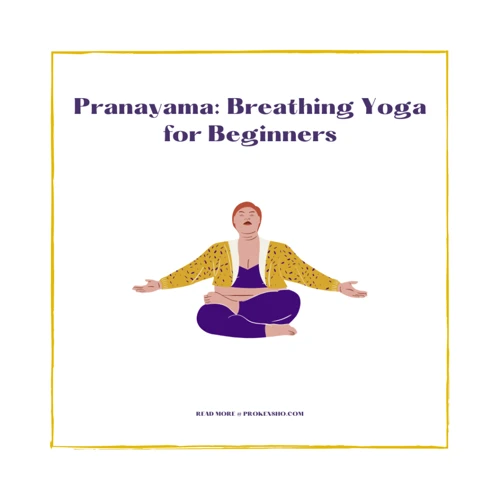Have you ever experienced a mid-day slump where you feel drained of energy and productivity? It’s a frustrating feeling that can hinder your ability to focus and get work done. But what if there was a simple solution? One that doesn’t require caffeine or energy drinks. The answer lies in your breath. Yes, your breath! Deep breathing exercises can help boost your vitality and productivity, allowing you to stay focused and energized throughout the day. In this article, we’ll explore the benefits of deep breathing, introduce you to four powerful breathing exercises, and provide tips on how to get started. Get ready to harness the power of your breath and transform your energy levels!
Benefits of Deep Breathing
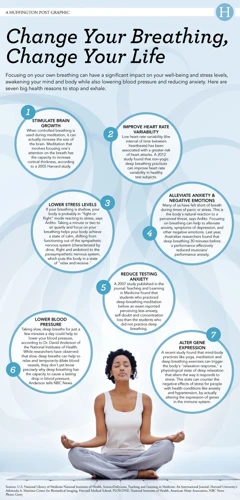
Have you ever stopped to think about the power of your breath? From reducing stress and anxiety to improving mental clarity and focus, deep breathing is a simple yet powerful tool that can transform your day-to-day life. It has been used for centuries in practices such as yoga and pranayama, where the connection between breath and vitality is deeply understood. In this section, we’ll explore the benefits of deep breathing and how it can help increase your energy and productivity. For more information on specific breathing techniques for healing and relaxation, check out Pranayama Breathing Techniques for Healing and Breathing Techniques for Stress and Relaxation.
Improved Mental Clarity and Focus
Deep breathing exercises can tremendously improve mental clarity and focus by increasing the level of oxygen in the brain. When the brain receives more oxygen, it functions at an optimal level, making it easier to concentrate and process information. Additionally, deep breathing exercises trigger the release of endorphins, which are hormones that induce feelings of pleasure and happiness, and this can help to reduce cognitive fatigue, mental fog, and memory lapses.
Research has shown that deep breathing exercises can help to improve cognitive function, memory recall, and attention span, especially in individuals who suffer from anxiety or depression. This is because deep breathing activates the parasympathetic nervous system, which is responsible for regulating heart rate, digestion, and overall bodily functions that promote relaxation.
One study carried out on medical students reported a significant improvement in their memory and retention capacity after practicing deep breathing exercises for just 6 weeks. Another study involving office workers reported a significant reduction in cognitive fatigue and an increase in alertness and productivity after practicing deep breathing exercises.
So, practicing deep breathing exercises daily can help you experience a significant boost to your mental focus and clarity. Incorporating deep breathing techniques into your daily routine can help you stay calm and focused during stressful situations and meetings, enabling you to operate at an optimal level so that you can achieve your daily goals and objectives with ease.
To learn more about the benefits of deep breathing, check out our dedicated article on The Benefits of Breathing: How Deep Breathing Can Improve Your Health and Well-being.
Reduced Stress and Anxiety
Deep breathing exercises have been shown to have a significant impact on reducing stress and anxiety levels. Chronic stress can lead to a whole host of physical and mental health problems, including high blood pressure, heart disease, depression, and anxiety. When we experience stress, our bodies go into a fight or flight response, triggering the release of stress hormones. Deep breathing exercises can help to counteract this response by activating the parasympathetic nervous system, which is responsible for rest and relaxation. Let’s take a look at how deep breathing can help reduce stress and anxiety in the table below:
| Benefits of Deep Breathing for Reducing Stress and Anxiety: |
|---|
| Activates the parasympathetic nervous system, promoting relaxation and reducing feelings of stress and anxiety |
| Slows down the heart rate and decreases blood pressure, reducing physiological signs of stress |
| Helps to regulate breathing patterns, reducing hyperventilation and feelings of panic |
| Increases oxygen levels in the blood, which can help to reduce feelings of fatigue and improve overall energy levels |
By incorporating deep breathing exercises into your daily routine, you can promote a sense of calm and relaxation, which can be especially helpful during times of stress or anxiety. Whether you practice alternate nostril breathing, breath counting, or any other deep breathing exercise, you are taking an active step towards improving your mental and physical well-being. Remember to take a few moments each day to focus on your breath and reconnect with your body, and you may be surprised at the positive impact it can have on your overall health and wellness. And, as we’ll discuss next, deep breathing exercises can help improve mental clarity and focus, making them a valuable tool for boosting productivity as well.
4 Breathing Exercises to Boost Energy and Productivity
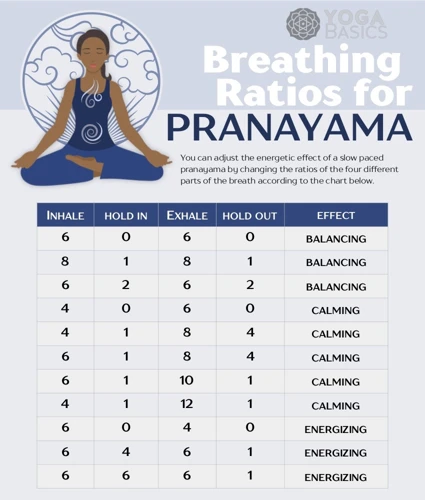
Are you feeling tired and sluggish during the day? Do you find it difficult to concentrate on your work? The solution may be as simple as taking a few moments to focus on your breath. Certain breathing exercises can help to boost your energy levels and productivity. By increasing oxygen flow to your brain and body, these exercises can improve mental clarity and reduce stress. In this section, we will explore four breathing exercises that can help you unlock greater vitality and productivity throughout your day. Remember to start with a few deep breaths before beginning each exercise, and to always listen to your body. Now, let’s dive into these energizing techniques!
1. Box Breathing
One of the most effective breathing exercises for boosting energy and productivity is box breathing. It is a simple technique that involves holding the breath for short periods to increase oxygen levels in the body. Here’s how to do it:
| Steps | Description |
|---|---|
| Step 1: | Inhale: Breathe in deeply through your nose for four seconds, expanding your belly and filling your lungs with air. |
| Step 2: | Hold: Hold your breath for four seconds. |
| Step 3: | Exhale: Exhale slowly through your mouth for four seconds, pushing out as much air as you can. |
| Step 4: | Hold: Hold your breath for four seconds before repeating the cycle. |
Repeat the cycle for 4-5 times initially and gradually increase the number as your body gets used to this technique. Practicing this exercise regularly can help increase oxygen levels in the body which helps in boosting energy levels and promoting relaxation. This can be done anywhere, anytime, and is a great way to relieve stress and anxiety.
It is important to note that if you are new to breathing exercises, it is best to start with a few cycles and gradually increase the duration and frequency of your practice. Additionally, box breathing is not recommended for individuals suffering from respiratory illnesses and pregnant women. If you experience any discomfort or dizziness while practicing any breathing exercises, stop immediately and consult your healthcare provider.
Adding box breathing to your daily routine can help improve your energy levels and promote relaxation. Incorporating breathing exercises in your life can help you in ways you never thought possible. To learn more about the connection between breathing and dreams, read our article on breath dream connection.
2. Abdominal Breathing
Abdominal breathing, also known as diaphragmatic breathing, is a powerful technique that can help improve your energy levels and overall well-being. This technique can be done in any comfortable position, be it standing, sitting, or lying down.
To perform abdominal breathing, follow these steps:
| Step | Description |
|---|---|
| 1. | Place one hand on your chest and the other on your belly. |
| 2. | Take a deep breath in through your nose, filling your belly with air. Your chest should still be. |
| 3. | Hold your breath for a few seconds. |
| 4. | Exhale through your mouth, releasing all the air from your belly. |
| 5. | Repeat for several breaths, focusing on the movement of your hand on your belly and allowing yourself to relax into the sensation of deep breathing. |
By focusing on the expansion and contraction of the belly, abdominal breathing stimulates the parasympathetic nervous system, which is responsible for promoting relaxation and reducing stress. This helps to decrease cortisol levels in the body, which can lead to higher energy levels and increased productivity.
Through consistent practice of abdominal breathing, you can improve your lung capacity and overall respiratory health, which can lead to improvements in energy and vitality. So give it a try next time you need a boost of energy or just want to relax and unwind.
3. Alternate Nostril Breathing
One breathing exercise that can help boost your energy and focus is alternate nostril breathing. This practice involves alternating the breath between the left and right nostrils. It’s believed to balance the body’s energy and improve mental clarity. Here’s how to do it:
| Step | Instructions |
|---|---|
| Step 1 | Find a comfortable seated position and relax your shoulders. Close your eyes and take a deep breath in and out through both nostrils. |
| Step 2 | Using your right hand, bring your index and middle fingers to rest on your forehead. Place your thumb on your right nostril and your ring finger on your left nostril. |
| Step 3 | Close your right nostril with your thumb and exhale through your left nostril. |
| Step 4 | Inhale through your left nostril and then close it with your ring finger. |
| Step 5 | Release your thumb and exhale through your right nostril. |
| Step 6 | Inhale through your right nostril and then close it with your thumb. |
| Step 7 | Release your ring finger and exhale through your left nostril. |
| Step 8 | Repeat steps 3-7 for several rounds, alternating between the left and right nostrils. |
| Step 9 | When you’re ready to finish, release your hand and take a few deep breaths through both nostrils. |
Practice this exercise for a few minutes each day and notice how it helps to improve your focus and energy levels. It’s a simple way to incorporate breathing exercises into your daily routine and reap the benefits of a calmer, more energized state of mind.
4. Breath of Fire
One powerful breathing exercise that can help boost energy and productivity is known as the Breath of Fire. It’s a rapid and rhythmic breathing technique that involves pumping the diaphragm to create more oxygen flow in the body. This exercise is known for its ability to increase vitality and awaken the body.
To do the Breath of Fire, sit in a comfortable cross-legged position with your hands on your knees. Keep your spine straight, take a deep inhale, and then begin rapid and forceful exhales through your nose. Each exhale should be short and quick, like a sniffing sound, and should come from the area just below your navel. As you exhale, your abs should contract, pushing the breath out of your body. The inhale will happen naturally as you release the contraction of your abs.
Here’s a table summarizing the steps for performing the Breath of Fire:
| Step 1: | Sit in a comfortable cross-legged position with your hands on your knees. |
| Step 2: | Take a deep inhale. |
| Step 3: | Begin rapid and forceful exhales through your nose. |
| Step 4: | Each exhale should be short and quick, like a sniffing sound, and should come from the area just below your navel. |
| Step 5: | As you exhale, your abs should contract, pushing the breath out of your body. |
| Step 6: | The inhale will happen naturally as you release the contraction of your abs. |
Practice the Breath of Fire for one to three minutes, then gradually increase the duration as you become more comfortable with the technique. This exercise can be invigorating and stimulating, so it’s perfect to do when you need a quick energy boost in the middle of the day.
When to Practice
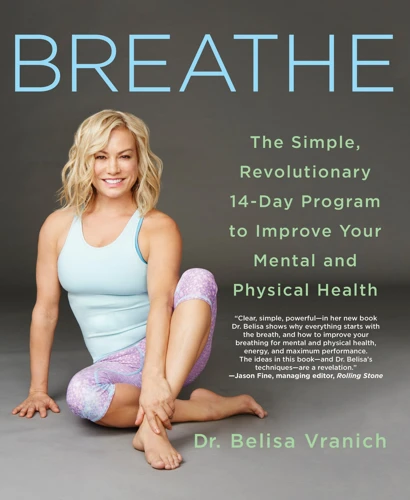
It is important to choose the right time to practice breathing exercises for maximum effectiveness. Experts recommend practicing breathing exercises early in the morning before starting your day, or before meals on an empty stomach. This is because it allows proper digestion and absorption of vital nutrients, reduces stress levels, and increases mental clarity and focus.
However, finding time for deep breathing exercises throughout the day can also be beneficial. Anytime you feel stressed, anxious or need a quick energy boost, practicing deep breathing exercises is a great way to manage your feelings and increase your productivity. You can incorporate these exercises into your daily routine by taking a few minutes to practice them after your lunch break or before bed.
It is important to remember that you do not need to practice all of these exercises every day. Choose one or two techniques that work best for you and incorporate them into your daily routine. Over time, you will notice the positive impact on your energy levels, productivity, and mental health.
Additionally, it is not recommended to practice deep breathing exercises while driving or operating heavy machinery as they can induce relaxation and drowsiness. Always find a comfortable and safe place to sit or lie down and ensure that you can focus solely on your breath without any distractions.
In summary, the best time to practice breathing exercises is in the morning on an empty stomach or anytime throughout the day when you need a quick energy boost or stress relief. Choose one or two techniques that work best for you and be consistent with your practice for maximum results. Remember to always find a comfortable and safe place to practice and avoid practicing while driving or operating heavy machinery.
Precautions
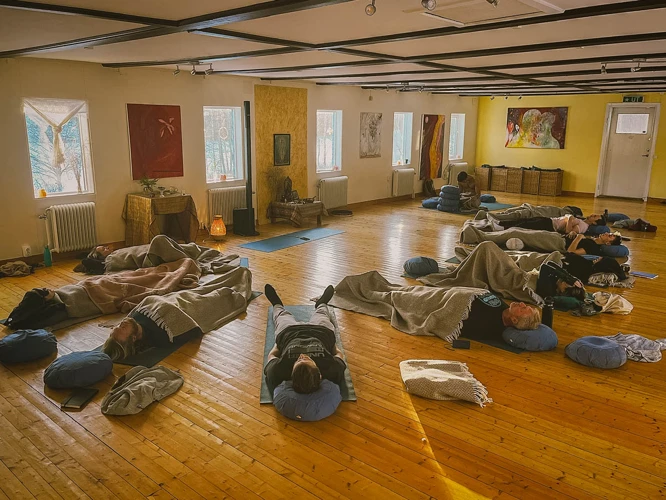
It is important to remember that any form of breathing exercise can have potential risks and precautions that need to be taken into consideration. While these exercises can provide a variety of benefits, it is crucial to be aware of these precautions to ensure your safety and wellbeing.
Consult with Your Doctor
Before starting any new exercise routine, including breathing exercises, it is vital to consult with your healthcare provider. They can evaluate your health status and help identify any underlying medical conditions that may affect the safety of these exercises.
Avoid Hyperventilating
During these breathing exercises, it is essential to avoid hyperventilating or breathing too rapidly. Over-breathing can lead to lightheadedness, dizziness, and even fainting. To avoid this, breathe at a comfortable and steady pace, and take breaks between exercises if necessary.
Practice in a Safe Environment
When performing breathing exercises, it is recommended to do them in a safe and controlled environment. Avoid practicing in areas where there is a risk of distraction or injury. Ensure that the area you choose is quiet and free from disturbances.
Be Mindful of Your Body
During these exercises, it is crucial to pay attention to your body’s reactions. If you feel any discomfort, dizziness, or pain, stop the exercise and rest. These symptoms may be a sign that the exercise is not suitable for you.
Don’t Push Your Limits
It’s important to understand that the benefits of breathing exercises come with time and practice. Don’t push yourself beyond your physical limits to obtain results quickly. Start slowly and gradually increase the intensity and duration of your exercises as you become more comfortable and confident.
By following these precautions and being mindful of your body’s responses, you can safely and effectively incorporate breathing exercises into your daily routine. However, if you experience any adverse effects, seek medical attention immediately.
How to Get Started

If you are new to breathing exercises or have never tried them before, it can be challenging to know how to get started. However, with a little guidance, anyone can start practicing deep breathing exercises to boost their energy and productivity.
Step 1: Choose a quiet and comfortable place
To get started, choose a quiet and comfortable place where you won’t be interrupted. This could be your living room, bedroom, or even outside in nature. The important thing is that you feel relaxed and at ease in your environment.
Step 2: Get in a comfortable position
Once you have found a quiet and comfortable place, get into a comfortable position. You can sit on a cushion or a chair with your back straight or lie down on your back. The important thing is that you feel comfortable and can breathe deeply.
Step 3: Relax your body
Before you start practicing any breathing exercises, take a few minutes to relax your body. Close your eyes and take a few deep breaths in and out, focusing on relaxing your muscles and letting go of any tension.
Step 4: Start with a simple breathing exercise
Start with a simple breathing exercise, such as abdominal breathing, and practice it for a few minutes each day. As you become more comfortable with the practice, you can try different exercises and increase the amount of time you spend practicing.
Step 5: Stay consistent
To see the benefits of deep breathing, it is important to stay consistent with your practice. Try to practice every day, even if it’s just for a few minutes. Over time, you will start to notice an improvement in your energy, focus, and productivity.
Step 6: Keep a breathing journal
To track your progress and see how your practice is impacting your life, consider keeping a breathing journal. Write down the exercises you practice, the amount of time you spend practicing, and any changes you notice in your mental and physical wellbeing.
By following these simple steps, you can start practicing deep breathing exercises to boost your energy and productivity. Remember, the key is to start small, be consistent, and stay patient. With time and practice, you will be amazed at the positive impact deep breathing can have on your life.
Tips for Success
To ensure success with these breathing exercises, it’s important to keep a few tips in mind. One of the most crucial tips is to commit to a regular practice. Just like any other form of exercise, consistency is key when it comes to reaping the benefits of deep breathing. This doesn’t mean you need to spend hours every day on breathing exercises – even just a few minutes each day can make a significant difference in your energy levels and overall well-being.
Another important tip is to find a comfortable position. You don’t need to sit cross-legged on the floor or contort yourself into difficult yoga poses to practice deep breathing. Instead, find a position that feels comfortable and natural to you, whether that’s sitting in a chair, lying down, or standing up. The key is to make sure that you’re relaxed and able to breathe deeply without feeling any tension or strain.
Additionally, it can be helpful to incorporate breathing exercises into your daily routine. For example, you could try doing a few minutes of deep breathing after waking up in the morning, as a way to start your day with a clearer mind and more energy. Or, you could make deep breathing a regular part of your midday break, using it as a way to recharge and refocus for the remainder of the workday.
Another important tip for success is to stay mindful and present. It’s easy for our minds to wander during deep breathing exercises, but the key is to bring our attention back to the breath whenever we notice that our thoughts are wandering. By staying mindful and focused on the present moment, we can maximize the benefits of deep breathing and cultivate a greater sense of calm and relaxation.
Finally, don’t be afraid to experiment with different types of breathing exercises to find what works best for you. Everyone’s body is unique, and what works well for one person may not be as effective for another. By trying out different techniques and paying attention to how your body responds, you can personalize your breathing practice to meet your specific needs and goals.
Conclusion
In conclusion, incorporating regular deep breathing exercises into your daily routine can provide numerous benefits for both your physical and mental well-being. By focusing on your breath and practicing techniques such as Box Breathing, Abdominal Breathing, Alternate Nostril Breathing, and Breath of Fire, you can increase your energy levels, improve your focus and mental clarity, and reduce stress and anxiety.
It’s important to remember to listen to your body and start slowly, gradually increasing the length and intensity of your breathing exercises over time. If you have any concerns or medical conditions, be sure to consult with your doctor before starting a deep breathing practice.
With consistent practice, deep breathing can become a powerful tool for managing stress, boosting productivity, and improving overall health. So take a deep breath, focus on the present moment, and start reaping the benefits of incorporating mindful breathing into your daily routine.
Frequently Asked Questions
1. Can breathing exercises really boost energy and productivity?
Yes, breathing exercises can increase oxygen flow and improve mental clarity, leading to increased energy and productivity.
2. How long should I practice each exercise?
Start with 5-10 minutes per exercise and gradually increase as you feel comfortable.
3. Is there a specific time of day when it’s best to practice breathing exercises?
No, you can practice breathing exercises anytime, but it’s recommended to choose a time when you won’t be distracted or interrupted.
4. Can these exercises help with sleep and relaxation?
Yes, certain breathing exercises, such as abdominal breathing and alternate nostril breathing, can promote relaxation and better sleep.
5. Is there a particular order in which to practice the exercises?
No, you can practice these exercises in any order that feels comfortable for you.
6. Can I practice breathing exercises while sitting at my desk at work?
Yes, breathing exercises can be done seated in a chair and can be a great way to take a quick break and refresh your mind and body.
7. Can I do these exercises with a cold or respiratory illness?
If you have difficulty breathing, it’s best to consult with a doctor before attempting breathing exercises.
8. Do I need any special equipment to practice these exercises?
No, all you need is a comfortable and quiet place to sit and practice.
9. How long does it take to see the benefits of practicing breathing exercises?
Many people report feeling more energized and focused after just one session, but the benefits can increase over time with regular practice.
10. Can breathing exercises replace other forms of exercise?
No, breathing exercises should not replace other forms of physical activity but can be used as a complementary practice for overall health and wellness.

